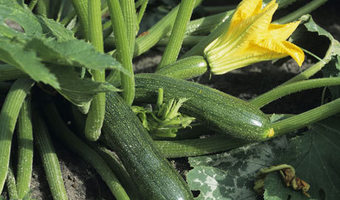 A loss making stint at greenhouse farming in the semi arid area of Narok was the eye opener for a retiree who has now found fortunes in diversified agriculture and now earning courgete, vegetables and dairy farming.
A loss making stint at greenhouse farming in the semi arid area of Narok was the eye opener for a retiree who has now found fortunes in diversified agriculture and now earning courgete, vegetables and dairy farming.
After retiring as director of the Kenya Dairy Goats Association Kuseyo ole Sasai wasn’t sure of what to do with the extra time on his hands. After thorough research and weighing options Mr Sasai settled on a greenhouse and started planting tomatoes on a leased parcel of land in Narok County.
Armed with little more than determination and passion for work, in 2009 Mr Sasai started greenhouse farming with an capital of Sh120,000 from his savings. Two years later, Mr Sasai realised that he was making losses mainly because that part of Narok was dry most of the year. “My biggest challenge was lack of water. The place was dry, rains were inadequate. Transporting water to the greenhouse was costly. I spent most of my income irrigating the land,” said Mr Sasai.
He said that he abandoned the greenhouse project and embarked on planting garlic, vegetables and keeping dairy cows. He named the farm Saumu Ranch. Saumu is a Kiswahili word for garlic. The farm is divided into four main parts. Twenty acres are under garlic and courgette vegetable, another section is under dairy farming, another part is set aside for his home and he plans to put up a camping site on the part adjacent to a river.
“The lower part of the ranch, which is largely undeveloped and scenic with a cliff, borders river Enkare Ng’osor. I plan to set up a camping site there,” said Mr Sasai. “I invested about Sh2 million in dairy farming,” he said. He borrowed much of the money from banks. He also invested in a water project for irrigating his land and watering his animals.
Hard work and determination bore fruits and Mr Sasai soon broke even. Eventually, dairy farming outperformed his other activities.
Mr Sasai said that he was not new to farming and cattle rearing, adding that he used to advice farmers on how to take care of livestock when he was director for Kenya Dairy Goats Association.
“I gave farmers advice on how to keep dairy animals and even ventured into the practice on a small scale,” he said. In just under four years since he ventured into the farming business, Mr Sasai is the owner of a 74-acre ranch. Kuseyo Dairies, as he calls the dairy business, is a modern zero grazing unit that houses 11 Friesian cows which he bought at Sh100,000 each. Calves are housed in a small stall next to the dairy unit.
“I want to make a difference in the society. Maasais are poor yet they have vast land and thousands of cattle which bring them no value. I want to be an example of what we can do with our resources,” Mr Sasai said.
Each cow produces an average of 30 litres of milk per day, much higher quantity than the maximum two litres which locals get, he said. Each litre is sold at Sh45.
“The first thing one needs to do before setting up a dairy farm is to plant fodder and have sufficient animal feeds. This is the kind of information I want to give my community members,” he said. He said that milk earns him about Sh300,000 per month while garlic and courgettes fetch over Sh100,000.
“I discovered that I needed to transform my community and bring about change of lifestyle by demonstrating to people that there are options other than the traditional way of farming which brings few returns,” he said. He said that the rural community was short competition, innovation and ambition due to lack of mentorship. “I want to be a mentor and inform our people that they can try out new ideas,” said Mr Sasai. He employs six permanent workers and hires casuals when need arises.
“I am disappointed that my community members have poor work ethics. That is why I have to bring in outsiders to help locals learn how to work. My strategy is to put one local in each section of Saumu Ranch for a given period. As they learn, I want to support them to replicate this venture on their own farms’’ he said.
Mr Sasai sells his milk to nearby schools and shopping centres. “In Narok milk is quite marketable,” he said. His biggest challenge is lack of workers which forces him to look for them to as far as Central and Kisii counties. “Local people work for a few days and run away, forcing me to stop my daily duties to search for other workers,” he said.
Sometimes the market is flooded with milk and farm produce, said Mr Sasai, bringing down prices. He overcomes this obstacle by maintaining regular customers such as schools, he said. Most farmers incur losses because they fail to conduct market research before embarking on the practice.
Successful agri-business, he said, must start with a study of the market. “Before I started growing garlic and courgettes I studied the market and noticed that it needed the products and that returns were good,” he said. Mr Sasai said that dairy cows are like humans; the more comfortable they are the more milk they produce and the more profit one earns.
He urged farmers to invest in cow mattresses if they want to increase milk output. He said that to become a successful dairy farmer one does not need to be a livestock expert, all one needs is passion, information and keenness to learn from successful farmers.
















Comments powered by CComment